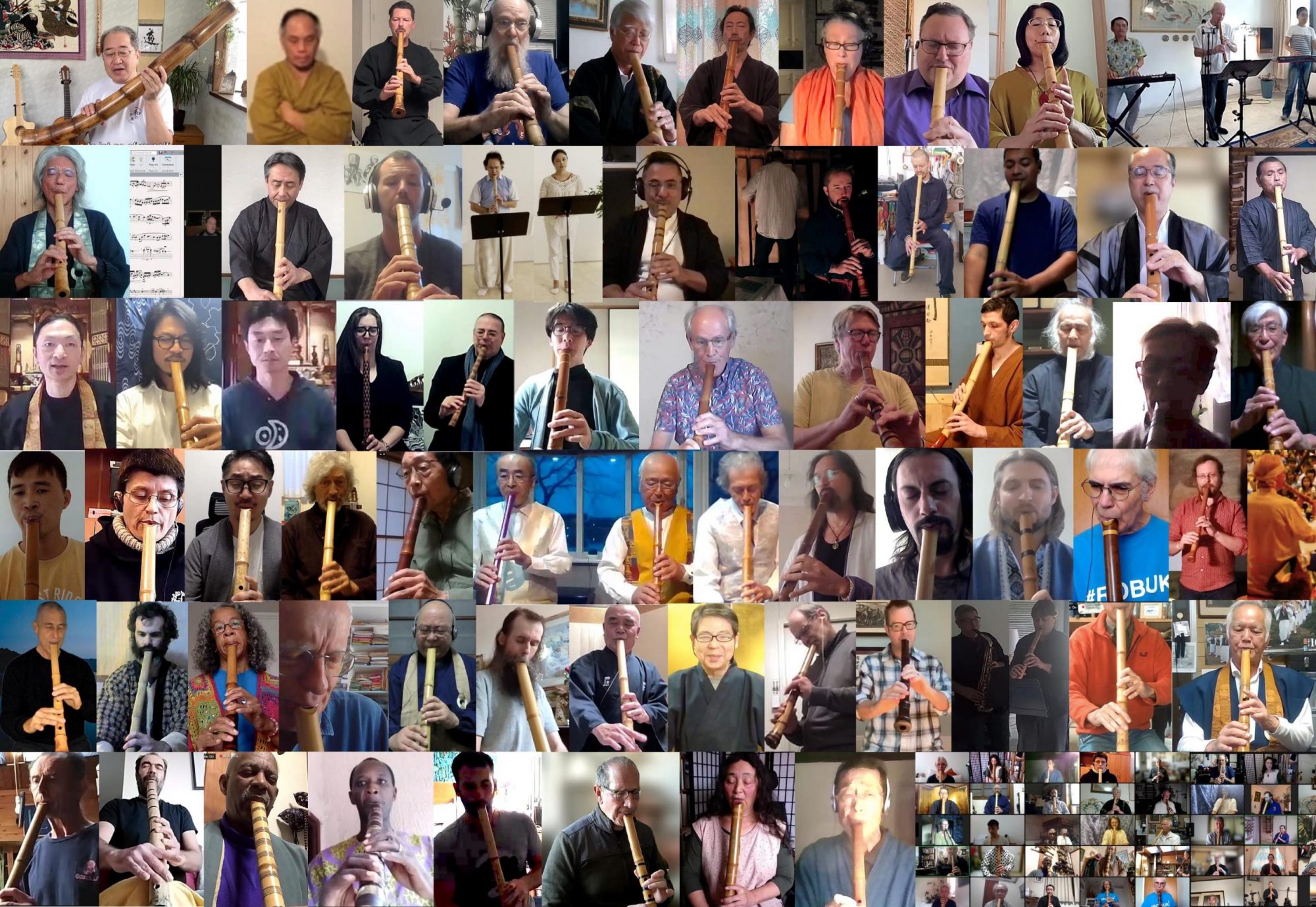World Shakuhachi Mentoring Day (WSMD) : Saturday 11th May, 2024
Dear shakuhachi enthusiasts,
The World Shakuhachi Day is based on the spirit of sharing our love for this wonderful instrument. Inspired by this same ‘sharing spirit’, the first ever and very successful World Shakuhachi Mentoring Day took place in October last year and provided an opportunity for more advanced players to share their knowledge with others through a series of one-day online lessons and the chance for participants to take part in lessons and learn new pieces and special techniques in a variety of styles offered free of charge.
World Shakuhachi Mentoring Days (WSMD) are designed to assist advanced students who are on their way to becoming teachers in the near future. To help them in this, and in particular to gain experience in remote teaching, which cannot be avoided in a post-pandemic world, this event will provide the apprentice teachers the chance to design a lesson on a piece in collaboration with their main teacher and deliver it online to participants who register in advance. The previous four apprentice teachers will also feature again in this event in May, but will teach different pieces and will be joined by two new apprentice teachers, this time from the USA.
For this to happen, we need your help !
Your registration as attendees is what will make this event possible. Each teaching session will be for one hour including a question/comment time slot when you can ask questions and also give feedback to the apprentice teachers on how you perceived the lessons – of course with kindness and constructiveness.
A panel of established teachers and feedback tutors will also provide feedback in a mentoring process similar to that involved between MA and PhD students in universities.
In the same spirit as the World Shakuhachi Day, all the apprentice teachers, the main teachers, panelists, and the organisers offer their services free of charge.
All you need to do is to register and you will then receive an email with the Zoom connection information and access to the teaching materials and get a free day of classes by aspiring practitioners and performers.
Registering address: kikuday@gmail.com
Deadline for registration: 10th May, 2024
The WSMD team
Schedule: (All times are CEST)
14:00 – 14.05 Opening
14.05 – 15.05 Tran Cao ‘Honte no Shirabe’ Zensabo
15.10 – 16.10 Nikita Chasovnikov ‘Rokudan on Shirabe’ Tozan
16.15 – 17.15 Ramon Humet ‘Hon Shirabe’ KSK
17.20 – 18.20 Lokesha Haber ‘Ashi no Shirabe’ Kinko
18.25 – 19.25 Marco Burmester ‘Azuma no Kyoku’ Jin Nyodo
19.30 – 20.30 Adam Robinson ‘Kyo Reibo’ Kinko
20.35 – 22.00 Panel discussion (Panel and apprentice teachers only)
22.00 ~ General feedback (Panel and apprentice teachers only) Spokesperson : James Schlefer
Bios of apprentice teachers (in the order of the schedule)
Trần Cao
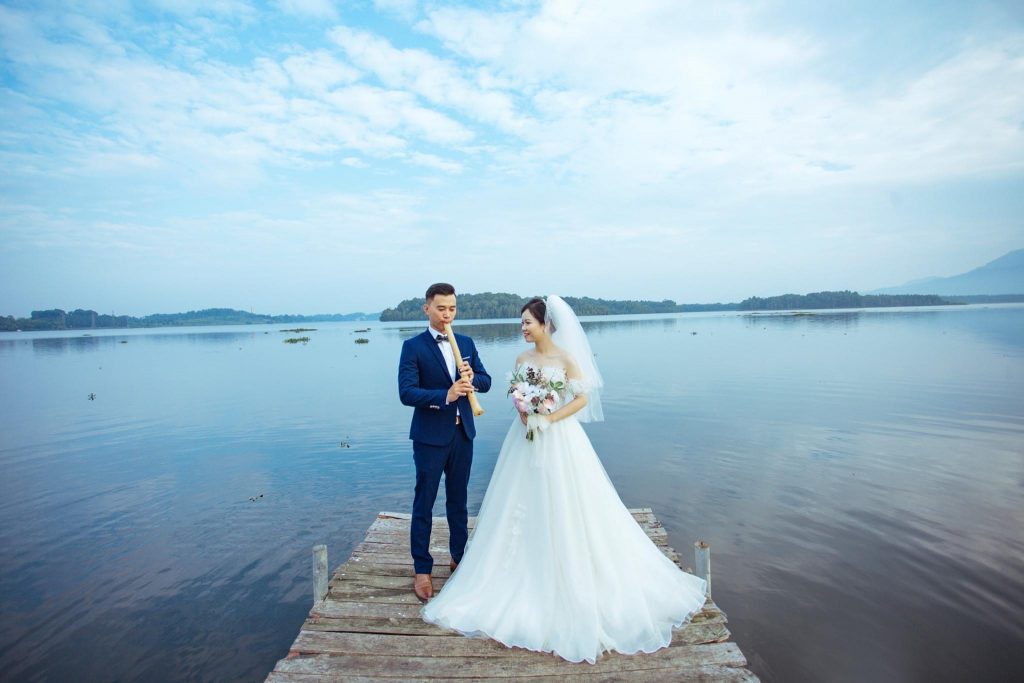
Trần Cao is a flute player from Vietnam who gave up his background in pharmacy in 2021 in order to pursue a career as a musician.
Cao has been studying Vietnamese flute for many years and is a member of the Suc Song Moi Traditional Orchestra. However, Cao has another passion, and that is the shakuhachi. He encountered the sounds of the shakuhachi many years ago and was very impressed and drawn to the sound. However, his desire to purchase a shakuhachi remained a dream due to the difference in the economy between Japan and Vietnam so he and many others who were interested in the shakuhachi were not able to buy an instrument and there were also no shakuhachi teachers in Vietnam. Consequently, to learn, it is necessary to find a teacher overseas, pay an overseas fee and to speak either Japanese or English. Cao then encountered and began studying with Kiku Day, who has supported and taught him many aspects of the shakuhachi. Today, he is dedicated to helping others and teaching shakuhachi to some Vietnamese students and some foreign friends. The World Shakuhachi Mentoring Day is a good chance to get advice and comments from great teachers.
Thank you so much for organizing this event.
Nikita Suikan (水寛) Chasovnikov
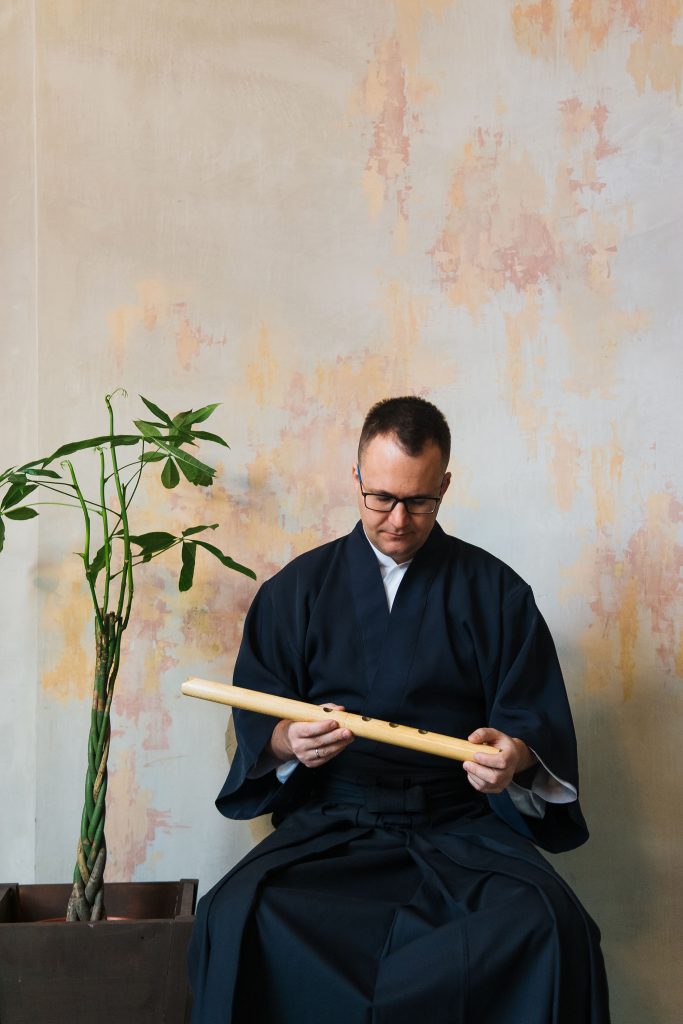
Nikita Suikan (水寛) Chasovnikov was born in Kaliningrad and now lives and works in Saint-Petersburg as a marine architect and has been playing and making shakuhachi from different materials including wood and plastic for the past 15 years. Currently, he is studying shakuhachi with Jean-François Suizan Lagrost in Shin Tozan ryu and passed his jun shihan exam last year
Nikita takes part in festivals held by the Japanese Consulate in Saint-Petersburg and in Moscow and is active in promoting an interest in shakuhachi in Russia through giving many lectures and concerts. He also frequently plays with koto and with a violin ensemble.
Ramon Humet
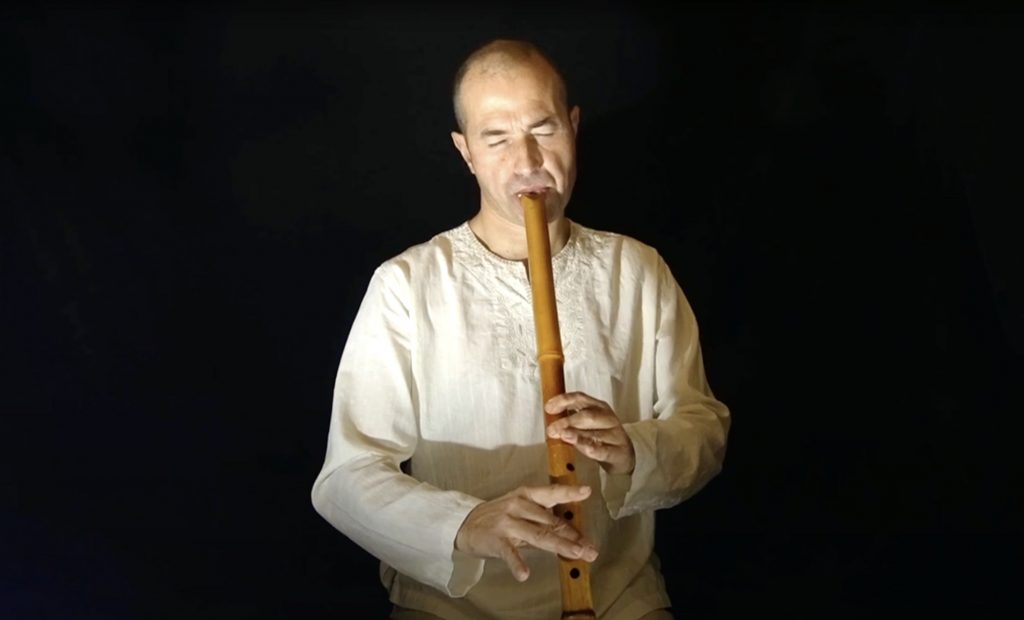
Ramon Humet (b. Barcelona, Spain), is a composer and
shakuhachi player. He began his shakuhachi studies with Horacio
Curti, with whom he studied for over 10 years, and currently
studies with Kakizakai Kaoru. He has written and premiered several
compositions for shakuhachi, of which “Desert” stands out, a
concerto for shakuhachi and symphony orchestra premiered by
Horacio Curti and the National Orchestra of Spain. Together with
the pianist Sílvia Vidal, he forms a duo offering meditative concerts
and sound baths. They maintain the YouTube channel So Silent
Website: www.ramonhumet.com
Lokesha Haber
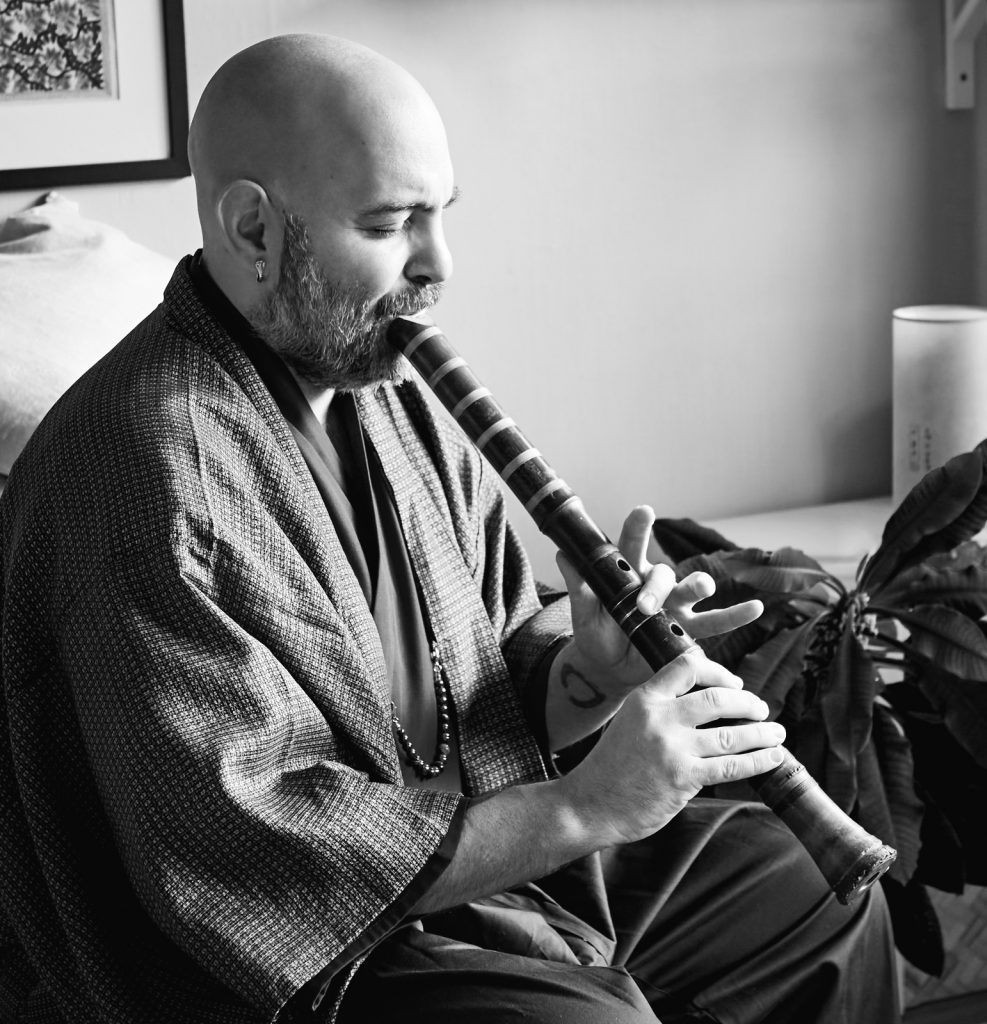
Lokesha Haber has studied the Kinko ryu repertoire in the style of Yamaguchi Goro (Chikumeisha) with Gunnar Jinmei Linder since 2010 and has recently completed ‘Chuden’ level of the Chikumeisha Branch which includes different jiuta sōkyoku (sankyoku) pieces of both Ikuta and Yamada traditions.
Marco Burmester
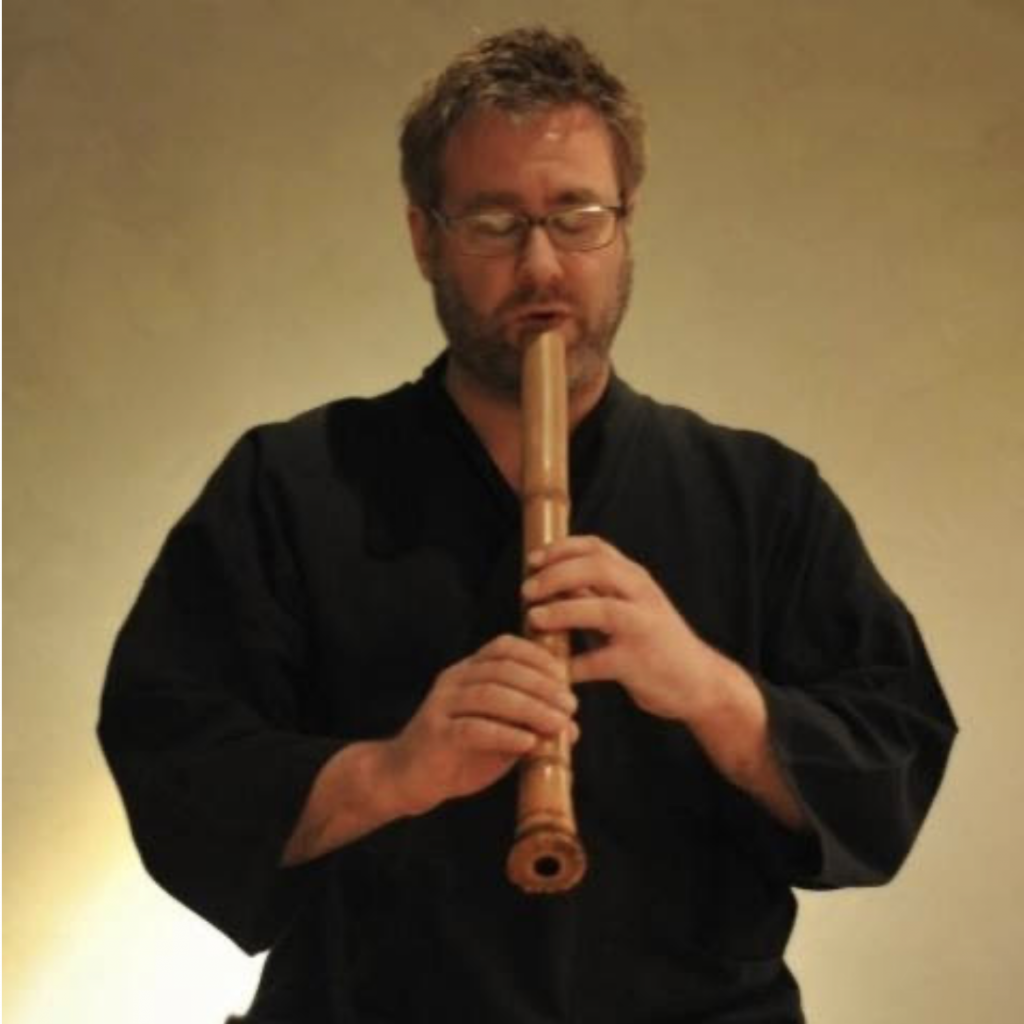
Marco, a native German, lives in New York City where he has been playing shakuhachi since 2005, first with Ronnie Nyogetsu Reishin Seldin, then with James Nyoraku Schlefer, second and third generation students of Jin Nyodo. In addition he has been taking classes with Kurahashi Yodo II for almost as many years. He has been equally trained in sankyoku (playing with Ikuta koto/ shamisen) and honkyoku (mainly Jin Nyodo’s collection). His focus has been on honkyoku solo performances in a zen monastery and in (taiko) concerts.
Adam Robinson
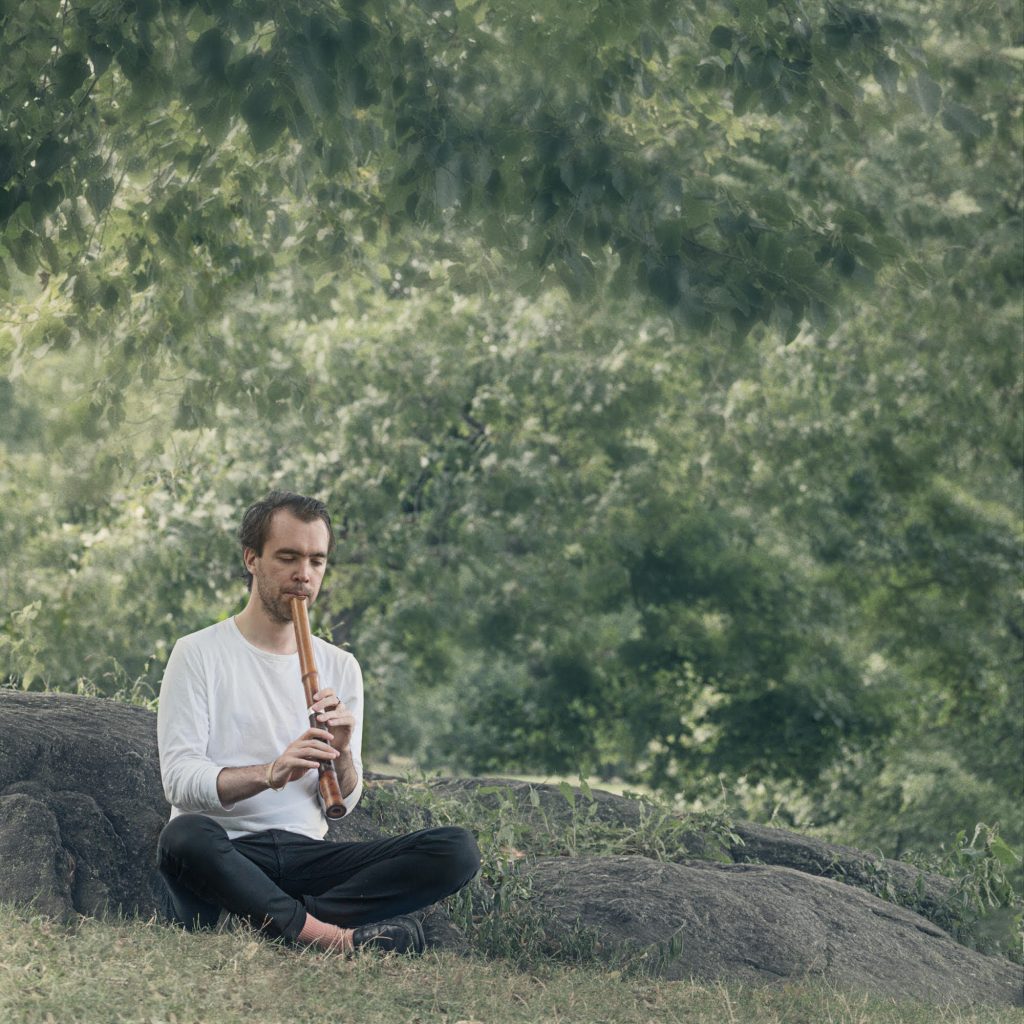
Adam Robinson is a shakuhachi player based in New York City. He has studied the iconic Japanese flute with Ralph Samuelson continuously since 2012 and has taken lessons in Japan with Tokumaru Jumei and Yamato Shudo. To supplement his shakuhachi life he studies Japanese ensemble music with acclaimed koto and shamisen players Sumie Kaneko (Yamada School) and Yoko Hiraoka (Ikuta School).
Adam attended The New School for Jazz and Contemporary Music where he studied improvisation and tenor saxophone. Post-grad experience in Conceptual Harmony was undertaken from 2013-2020 with La Monte Young, Marian Zazeela and Jung Hee Choi. He was a an original member of Gamin’s Unforgotten Song project in 2019. He currently performs with the Columbia University Gagaku Ensemble, The Hudson Valley Shakuhachi Choir, leads the Brooklyn Shakuhachi Club, and gives performances in the New York metropolitan area.
_ _ _ _ _ _ _ _ _ _ _ _ _ _ _ _ _ _ _ _ _ _ _ _ _ _ _ _ _ _ _ _ _ _ _ _ _ _ _ _ _ _ _ _ _ _ _
WORLD SHAKUHACHI MENTORING DAY OCTOBER 2023
Dear shakuhachi enthusiasts,
The World Shakuhachi Day (WSD) has always been based on the spirit of sharing our love for this wonderful instrument’ and, inspired by this same ‘sharing spirit’, a further online event will take place on October 1st, 2023, one week before the WSD, to provide an opportunity for more advanced players to share their knowledge with others through a series of one-day online lessons offered free of charge.
This so-called World Shakuhachi Mentoring Day (WSMD) is designed to assist advanced students, who are on their way to becoming teachers in the near future. To help them in this, and in particular to gain experience in remote teaching, which cannot be avoided in a post-pandemic world, this event will enable the apprentice teachers the chance to design a lesson on a piece in collaboration with their main teacher and deliver it online to participants who register in advance.
This will also provide the opportunity for participants to take part in lessons and learn new pieces and special techniques in a variety of styles.
For this to happen, we need your help !
Your registration as attendees is what will make this event possible. After each session, there will be a question/comment time slot when you can ask questions and also give feedback to the apprentice teachers on how you perceived the lessons: of course, with kindness and constructiveness.
A panel of established teachers will also provide feedback in a mentoring process similar to that involved between MA and PhD students in universities.
In the same spirit as the World Shakuhachi Day, all the apprentice teachers, the main teachers, panelists, and the organisers offer their services free of charge.
All you need to do is to register and you will then receive an email with the Zoom connection information and access to the teaching materials and get a free day of classes by aspiring practitioners and performers.
All lessons will be in English.
Registering address: kikuday@gmail.com
Deadline for registration: 29th September, 2023
The WSMD team :
Michael Coxall, Kiku Day, Christophe Gaston, Jim Franklin, Jean-François Lagrost, Horacio Curti and Gunnar Linder
Schedule: (All times are CEST – Central European Summer Time)
9:00 – 9:10 Opening
9:10 – 10:10 Trần Cao teaching (Daha – Zensabo) – Intermediate level
10:10 – 10:30 Questions and comments
10:30 – 10:40 Break
10:40 – 11:40 Nikita Chasovnikov teaching (Seikaiha – Tozan-ryū honkyoku) – Intermediate level
11:40 – 12:00 Questions and comments
12:00 – 13:00 LUNCH BREAK —
13:00 – 14:00 Ramon Humet (Autumn Wind – own composition) – Beginner level
14:00 – 14:20 Questions and comments
14:20 – 14:30 Break
14:30 – 15:30 Lokesha Haber teaching (Hi Fu Mi Hachigaeshi – Kinko-ryū Chikumeisha honkyoku) – Beginner level
15:30 – 15:50 Questions and comments
15:50 – 16:00 Break
16:00 – 17:00 Panel discussion (Panelists only)
17:00 – 18:00 Panel feedback to apprentice teachers

Trần Cao is a flute player from Vietnam whose background is in pharmacy but who, in 2021, decided to pursue a career as a musician.
Cao has been studying Vietnamese flute for many years and is now a second-year student at Hanoi College of Arts, dedicating his life to music. His other passion is the shakuhachi which he encountered many years ago and was very impressed and drawn to the sound. However, buying a shakuhachi remained a dream due to the economic difference between Japan and Vietnam. Also, as there were no shakuhachi teachers in Vietnam it is necessary for a student there to find a teacher overseas, pay an overseas fee and need to speak either Japanese or English. Fortunately, Cao found Kiku Day and now studies under her and he is dedicated to helping others and teaching shakuhachi in Vietnam.
About the piece: Daha (Zensabo honkyoku)
Daha is to some extent a programmatic piece depicting the pounding of the waves on the seashore. The ‘da’ in the title means to strike, and ‘ha’ means wave and often translated as ‘Pounding Wave’.
There are many interpretations of this piece which are related to Buddhist philosophy, where the objective is to transcend the natural state. The piece goes through rough and powerful, and lighter and more cheerful sections, which can be understood as how life and nature is ever-changing and as a representation of the important concept of impermanence.
Daha is a honkyoku that has some level of difficulty as it introduces some new techniques such as kororo and komibuki. Therefore, this piece is suitable for intermediate to advanced students who are able to:
– read the music notation
– play in both otsu and kan
– play meri notes.

Nikita Suikan (水寛) Chasovnikov was born in Kaliningrad and now lives and works in Saint-Petersburg as a marine architect and has been playing and making shakuhachi from different materials including wood and plastic for the past 15 years. Currently, he is studying shakuhachi with Jean-François Suizan Lagrost in Shin Tozan ryu and passed his jun shihan exam last year
Nikita takes part in festivals held by the Japanese Consulate in Saint-Petersburg and in Moscow and is active in promoting an interest in shakuhachi in Russia through giving many lectures and concerts. He also frequently plays with koto and with a violin ensemble.
About the piece: ‘Seikaiha’ (Tozan Ryu honkyoku )
This piece was written by Nakao Tozan in 1904 and consists of four parts, the first two being free solo parts and the last two parts being duets. It is said to have been written with emotional and patriotic feelings after the fall of Lüshun Port in Dalian. The first part depicts the mighty sea waves, hence the name of piece “Seikaiha” – ripple pattern (waves) on the sea’s surface.
To follow the lesson students are expected to be able to play in both otsu and kan registers. It is written in Tozan ryu notation.
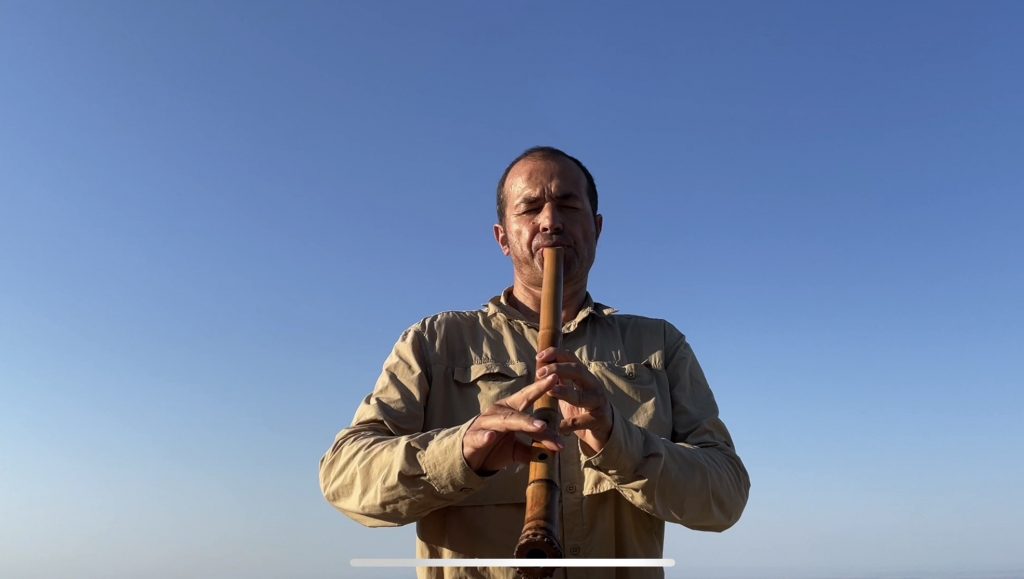
Ramon Humet (b. Barcelona, Spain), is a composer and shakuhachi player. He began his shakuhachi studies with Horacio Curti, with whom he studied for over 10 years, and currently studies with Kakizakai Kaoru. He has written and premiered several compositions for shakuhachi, of which “Desert” stands out, a concerto for shakuhachi and symphony orchestra premiered by Horacio Curti and the National Orchestra of Spain. Together with the pianist Sílvia Vidal, he forms a duo offering meditative concerts and sound baths. They maintain the YouTube channel So Silent.
Website: www.ramonhumet.com
About the piece: This workshop is aimed at beginners with very little shakuhachi experience who are able to play the basic notes (Ro, Tsu, Re, Chi, Ri) in the low register (Otsu). We will study one or two very easy pieces but which already have all the elements of honkyoku, and which will allow us to enter into the serene and meditative practice of the Zen tradition through shakuhachi.

Lokesha Haber has studied the Kinko ryu repertoire in the style of Yamaguchi Goro (Chikumeisha) with Gunnar Jinmei Linder since 2010 and has recently completed ‘Chuden’ level of the Chikumeisha Branch which includes different Ikuta and jiuta sankyoku pieces.
About the piece: Hi Fu Mi Hachigaeshi (Kinko-ryū chikumeisha honkyoku) beginner level
Hi Fu Mi Hachigaeshi consists of two pieces: ‘Hi Fu Mi Hachigaeshi’ which means ‘one, two, three’ and is the introductory part and ‘Hachigaeshi’ which means ‘return the bowl’. The piece is from the Edo period and was played by komuso monks in return for alms received begging or on pilgrimages. It is regarded as a threshold piece where the player has to show their ‘intention of learning’, earning the right to enter the world of shakuhachi and, if completed, will likely continue with the shakuhachi.
Hi Fu Mi Hachigaeshi is a beginner level piece for players who have the ability to produce both otsu and kan sounds on their shakuhachi, and for those who would like to have an introduction to Kinko-ryu honkyoku..
